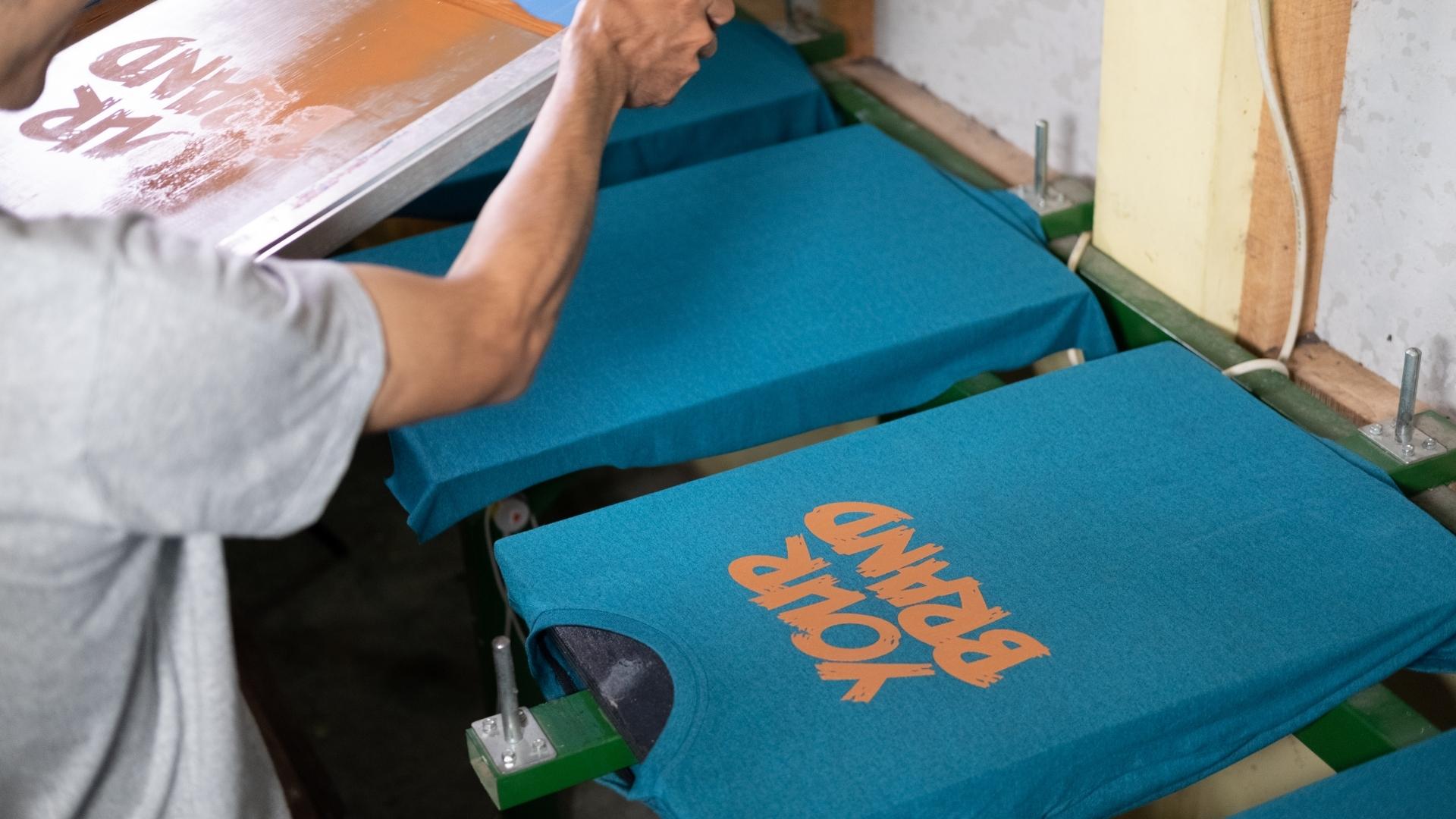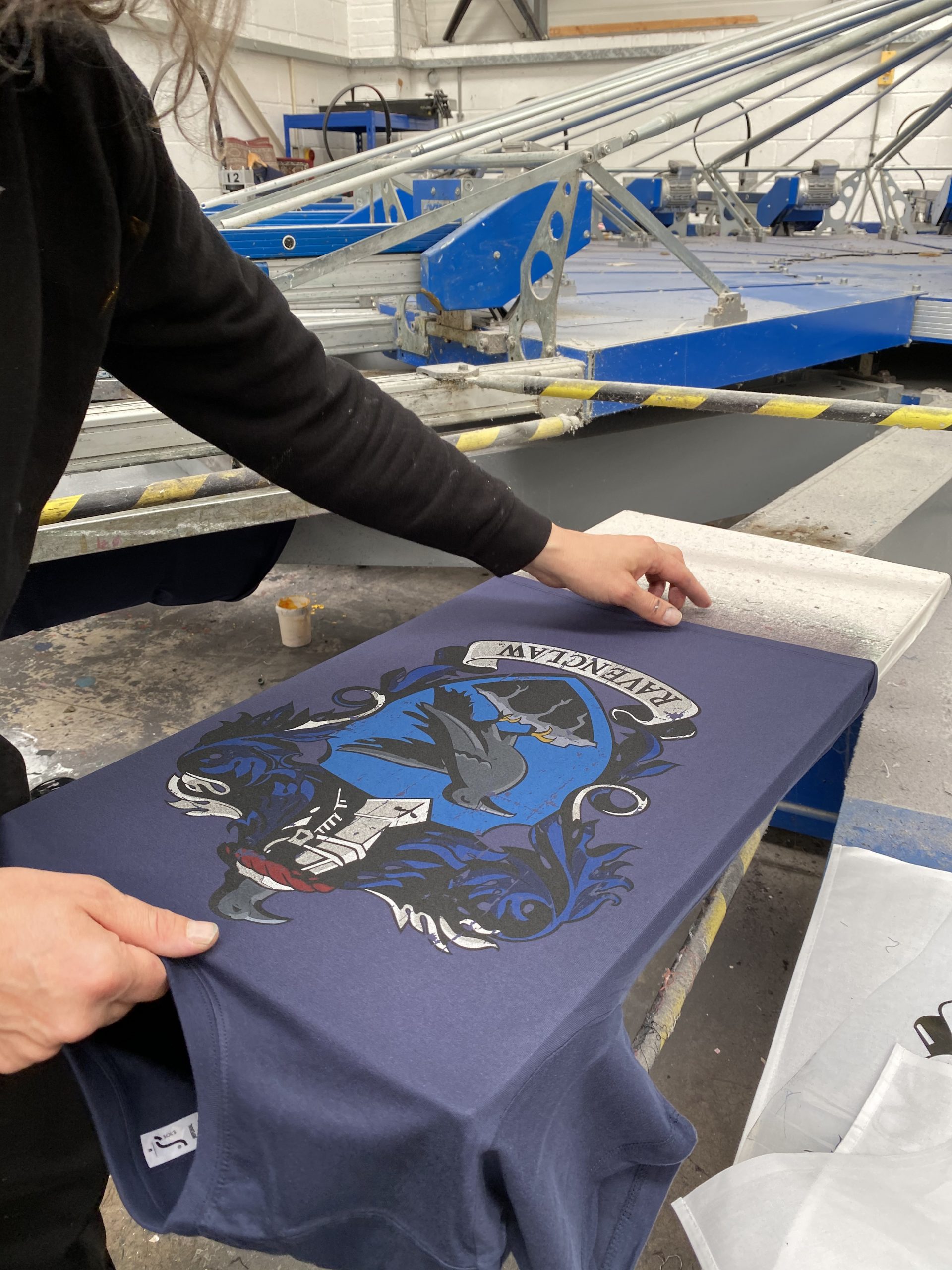ChatGPT said: The value of working with 10:9 Design Embroidery for branding
The Necessary Overview to Comprehending Screen Printing and Its Versatile Uses
Screen printing has a rich history that goes back to ancient times, evolving right into a sophisticated technique utilized throughout numerous sectors today. This guide discovers the complexities of the screen printing procedure, describing its applications in advertising, style, and home style - 10:9 Design contact. Understanding these basics can open innovative possibility for both imaginative and industrial jobs. The complying with sections will certainly reveal crucial ideas and methods to improve one's screen printing undertakings
The History of Screen Printing
Although screen printing has origins that map back centuries, its advancement shows the technological and creative innovations of different societies. Coming from old China, the strategy was originally used for enhancing textiles and later infect Japan, where it came to be indispensable to Ukiyo-e woodblock printing. The method moved to Europe in the 18th century, where it got appeal amongst craftsmens and commercial printers. The creation of picture solution in the 20th century changed screen printing, allowing for more complex styles and better performance. Artists like Andy Warhol further propelled its popularity, using the tool to create famous works that mixed commercialism and fine art. By the late 20th century, screen printing had developed itself as a functional strategy, employed in style, marketing, and art. Today, it remains to advance, integrating electronic modern technology and broadening its applications throughout numerous industries.
The Screen Printing Refine Explained
Screen printing changes imaginative visions right into substantial designs with a series of specific steps. Originally, a picture is produced and afterwards moved onto a screen, commonly made of great mesh material stretched over a structure. A light-sensitive solution is related to the screen, which is revealed to light, solidifying in areas not covered by the photo. After cleaning out the unhardened solution, a pattern is developed.
Next off, the screen is placed over the substratum, whether it be material, paper, or an additional material. Ink is after that pressed via the open locations of the stencil using a squeegee, transferring the design onto the substratum listed below. This process can be duplicated for numerous colors, requiring separate displays for each and every color. The published thing is cured using heat to ensure the ink adheres appropriately, resulting in a resilient, vivid style ready for use.
Sorts Of Screen Printing Techniques

Additionally, specialty strategies, such as discharge screen printing, eliminate dye from the material to develop softer prints, while foil screen printing applies metal aluminum foil to attain a shiny finish (10:9 Design Screen Printing). Each technique supplies unique features, accommodating various innovative requirements and manufacturing ranges, ultimately expanding the opportunities within the screen printing domain
Applications of Screen Printing in Various Industries

Furthermore, the signage and marketing sectors utilize screen printing for creating captivating displays and banners. This approach permits strong shades and intricate layouts that capture interest. In electronics, screen printing is employed for applying conductive inks to circuit card, essential for component connections. Additionally, the home decoration market accepts screen printing to produce unique layouts on fabrics and wall surface art. Generally, screen printing serves as an essential tool across varied areas, boosting items with individualized and visually enticing graphics.
Tips for Successful Screen Printing Projects
While taking on a screen printing job, cautious focus to detail can substantially boost the last result. First, selecting premium products is necessary; this includes the screen, inks, and substrates. Using proper mesh counts can affect ink deposition and information resolution. Preparation is equally important; complete cleansing of displays and proper direct exposure times ensure crisp prints.
Next off, precise enrollment is crucial for multi-color prints. Making use of placement tools can assist attain accurate layering. Additionally, screening prints on scrap materials prior to production assists determine possible problems without throwing away resources.

Regularly Asked Concerns
What Products Are Ideal for Screen Printing on Fabric?
Cotton and polyester blends are ideal for screen printing on textile due to their durability and ink absorption. Additionally, specialty textiles like silk or canvas can generate unique textures and surfaces, enhancing the total style quality.
Just how Do I Clean and Maintain Screen Printing Tools?
To preserve and clean up screen printing equipment, one need to regularly wash screens with proper solvents, examine mops for wear, lubricate relocating parts, and shop all items in a completely dry, dust-free setting to extend their life expectancy.
What Are the Environmental Influences of Screen Printing?
Screen printing can have considerable ecological effects, consisting of chemical waste from solvents and inks, water usage throughout cleaning procedures, and energy intake. Eco-friendly products and lasting practices are necessary for decreasing these negative impacts.
Can Screen Printing Be Done in the house Successfully?
Screen printing can be efficiently done at home with the right products and strategies. Enthusiasts can develop top quality prints, though success depends on their skill degree, equipment, and understanding of the procedure involved.
What Are the Prices Connected With Beginning a Display Printing Organization?

Beginning a screen printing business entails costs for devices, products, and work space. Initial expenditures generally vary from a couple of hundred to a number of thousand dollars, relying on the range, high quality of machinery, and desired production ability.
Screen printing has a rich background that dates back to old times, evolving right into an innovative strategy made use of throughout different markets today. An additional technique, rotating screen printing, utilizes cylindrical screens, promoting constant printing on fabric rolls, consequently improving efficiency for large productions. Additionally, specialized strategies, such as discharge screen printing, get rid of dye from the fabric to develop softer prints, while foil screen printing uses metal foil to attain a glossy finish. In the fashion market, screen printing is commonly utilized to produce lively layouts on clothing, making it possible for brand names to display their one-of-a-kind styles. Cotton and polyester blends are suitable for screen printing on textile due to their longevity and ink absorption.